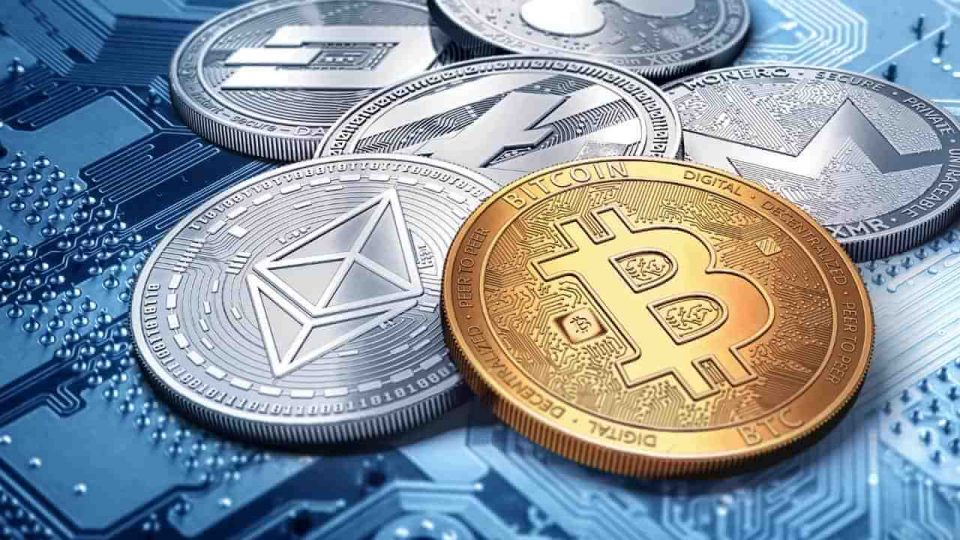Bitcoin is a cryptocurrency that can be used to buy any good or service wherever it is accepted. It is a free and decentralized digital currency that allows transactions without the need for intermediaries. It uses a peer-to-peer technology, which reduces the transaction to the parties involved who send and receive the Bitcoins through a digital wallet or wallet that has a Bitcoin address, similar to a bank account but free of all kinds of control or bureaucracy. The miners are responsible for confirming these operations through the “Proof of Work”.
Bitcoin News is the world’s premier 24/7 news feed covering everything bitcoin-related, including world economy, exchange rates and money politics.
making a bit of history
Table of Contents
On October 31, 2008 , Nakamoto published the Bitcoin white paper , describing in detail how a peer-to-peer digital currency could be implemented . In it they proposed to use a decentralized ledger of transactions packed in batches (called “blocks”) and secured by cryptographic algorithms or blokchain as we know it today.
Just two months later, on January 3, 2009 , Nakamoto mined the first block on the Bitcoin network , known as the genesis block, thus launching the world’s first cryptocurrency.
Although Nakamoto was the original inventor, over the years a large number of people have helped improve the software by patching vulnerabilities and adding new features.
The Bitcoin source code archive on GitHub lists more than 750 contributors, some of the most important being Wladimir J van der Laan, Marco Falke, Pieter Wuille, Gavin Andresen, Jonas Schnelli, among others.
How does Bitcoin work?
Although it does not physically exist, it works like any other fiat currency such as the dollar or euro. They do not have a serial number or mechanism to be able to track those who use this coin. Although it should be noted that the blockchain contains all this information within the large accounting book where, if required, the transaction can be tracked. Which rules out the myth that it’s totally anonymous. It is in the sense that they do not request data to be able to operate with them.
Being a decentralized currency, it does not require the trust of a central bank. This is supported by the community itself, which through the “Proof of Work” consensus confirms each transaction and adds it to the blockchain blocks. It should be clarified that once confirmed, it cannot be deleted or made any type of return.
What is the function of the blockchain?
The blockchain is like a large ledger where all operations are recorded and approved. A transaction cannot be falsified, as all existing copies of it must be the same. This is achieved with what we mentioned before the “Work Test”.
This is the consensus mechanism miners use to validate transactions. A mathematical calculation is presented, which must be solved. The first miner to solve it gets the reward in Bitcoin, as long as it is confirmed by the entire community.
The transactions are handled with an open code and do not require any intermediary for their operation.
What are their characteristics?
Its characteristics are what make Bitcoin a unique currency and that its model has been replicated by other existing cryptocurrencies, although with some differences from those of this cryptocurrency:
- The money supply is limited to 21 million tokens, which are reduced to 50% in the halvings that take place every four years, reducing the miners’ reward.
- Transactions that have been validated cannot be banned or censored
- It is created with an open source
- It is accessible to all users around the world
- It is not necessary to identify yourself to use them
- Can be exchanged with any fiat currency or other cryptocurrency
How are Bitcoins produced?
The miners are responsible for producing the Bitcoins through the “Proof of Work” consensus method as we said before.
The form of resolution is through a mathematical problem, which needs to be powerful computers to be able to solve it. Once confirmed, the transaction is added to the blockchain blocks.
This also serves to provide security to the network. Some nodes, called full nodes, are a kind of software ‘station’ that safeguards a copy of the block chain , where all transactions are registered, and these are only validated when they appear in each of those copies, thus ensuring their legitimacy.
Miners can work individually or join a pool. For more information on this, you can read our article about the aforementioned consensus method.
The hash rate is one of the most important aspects of Bitcoin mining as it determines how much computing power you are willing to use to mine the cryptocurrency. The higher the hash rate, the more secure the blockchain will be.
The generation rate is scheduled to be reduced every 4 years by 50% until 21 million tokens are reached.
As of January 25, 2021, the total BTC in circulation was 18,844,750. In 2014 it was just over 12 million bitcoins. Every 10 minutes it increases, but each time at a slower rate.
As demand increases and supply decreases, the value will increase.
What can I use Bitcoins for?
Bitcoin has three functionalities:
- accounting unit
- Exchange medium
- Preservation of value
The latter is somewhat controversial due to the fluctuations in its value.
Bitcoin was a break in electronic commerce by being able to channel transactions without the need for a bank as we were used to. Eliminating fees or commissions for the service provided.
How to buy Bitcoins?
To buy Bitcoins you need a digital wallet or wallet to be able to transfer them from the Exchange to it using the public and private keys that it gives you:
- You open a user in an Exchange that allows cryptocurrency transactions
- You connect your wallet to it
- Bitcoin purchases
- You transfer them to your wallet or leave it inside the Exchange user
With these simple steps you will have access to your Bitcoins from any mobile device or computer using them anywhere in the world.
Javier Molina on Bitcoin ETFs: “This milestone in the history of BTC will make it popular as an investment asset”
We asked our expert and professor of the cryptocurrency investment course, Javier Molina , about the new Bitcoin ETFs, futures and price forecasts.
-What can we expect from Bitcoin from now on with almost 3 ETFs in the American market (the third one opens this week)? Will it help strengthen the cryptocurrency?
This milestone in the history of BTC will make it popular as an investment asset. As long as it maintains the decorrelation with the classic markets, there will be arguments (beyond those offered in its BTC monetization process) to add it to diversified portfolios. ETFs are one of the most used vehicles by investors, both final and institutional.
-How will this affect the future of Bitcoin?
Little by little we will see a decrease in volatility and an increase in its monetization, as long as society sees utility in its use either as an asset, as a reserve of value or as “sound money”.
-Some experts place the price of Bitcoin at $500,000 by 2028. What perspective do you have on the price?
To make forecasts on an asset of these characteristics seems reckless and pure invention to me. If the comparison is against gold, by way of occupying the position of the digital reserve asset (gold 2.0) and by capitalization, then we can say that it has an upward path. But let’s not forget that in this equation demand plays a key role and that is what needs to be watched.
-What percentage of users exist approximately that regularly use this cryptocurrency?
At the level of use as currency, few. At the level of speculation a few more. At the reserve of value level (HODL) about 75% have them for that purpose.

